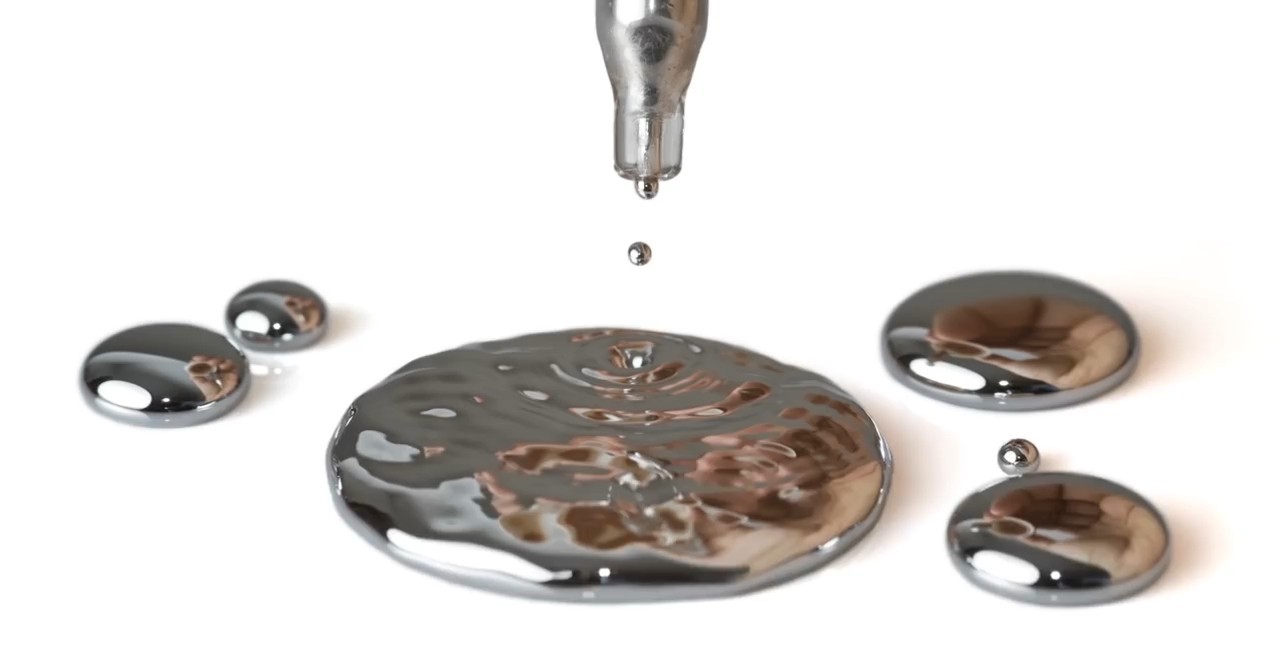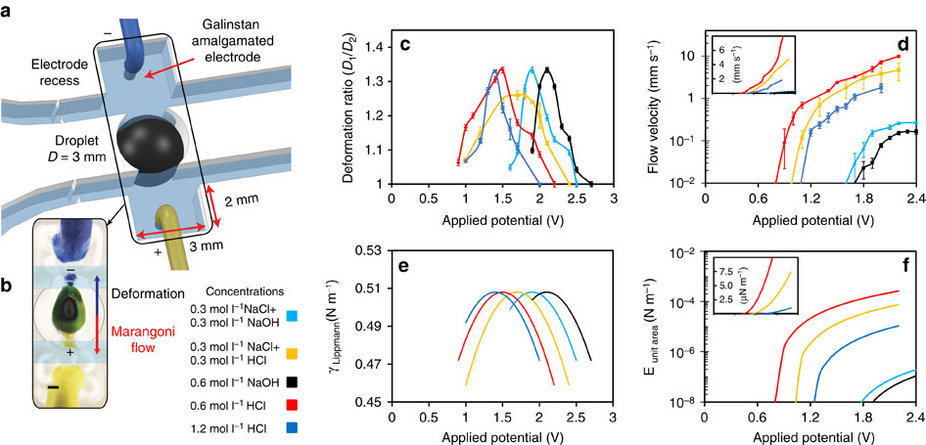Liquid metal forced to move
Remember the model T-1000 from the movie "Terminator-2"?

Drops of liquid metal, alloy Galinstan. Photo: Melbourne Royal Technological University
Thanks to the invention of scientists from the Royal Melbourne Technological University (Australia) in the future, mankind will be able to construct something similar to the T-1000 model from the movie “Terminator-2”: a 3D model of a humanoid of metal that takes a given shape. It is only necessary to make this model more programmable and obedient, of course.
Liquid moving metal is able to make a small revolution in electronics - with its help electronic circuits change their configuration on command and work like living organisms, where cells move and exchange information with each other, scientists dream .
The self-propelled liquid metal was developed by a group of scientists under the guidance of Professor Kurosh Kalantar-zadeh (Kourosh Kalantar-zadeh). The essence of the invention is in the chemical composition of the solution in which the droplets move. By changing the acidity and ionic composition (electrical charge) of the solution, researchers can control the movement of metal droplets in three dimensions.
The illustration shows a schematic of an experimental setup that was used by scientists (b): two channels in the shape of U letters from polymethyl methacrylate, that is, organic glass. They run parallel to each other and are connected at the outlet (outlet on the diagram). Two channels carry different types of electrolytes, which are represented in the diagram in different colors: the acid medium is yellow, and the alkaline one is blue. Two parallel streams contact through a drop of liquid Galinstan with a diameter of 3 mm. The real photos of the experimental setup are shown below.

Galinstan- alloy, which consists of 68.5% of gallium, 21.5% of indium and 10% of tin. The stated melting point of the metal is 19 ° C, but it can be reduced below 0 ° C (the copyright holder Geratherm Medical AG does not disclose a method of lowering the melting temperature, but such a method definitely exists). The main use of Galinstan is the replacement of mercury in some areas, primarily in household thermometers.
The drops of Galinstan move depending on the concentration of HCl and NaOH in the solution. The following diagram shows the effect on the metal of the Marangoni effect - a type of convection, substance transfer along the interface between two media, resulting from the presence of a surface tension gradient.

The diagrams below show the degree of deformation of a drop, depending on the concentration of HCl and NaOH in solutions.

A simple change in the chemical composition of the solutions causes the metal drops to move and change its shape, without any additional external influence, mechanical or electrical.
“Using this discovery, we were able to create moving objects, switches and pumps that can work autonomously — these are self-propelled liquid metals that move depending on the composition of the surrounding liquid,” says Professor Kalantar-zade. “In the end, using the fundamentals of this discovery, it may be possible to build a 3D liquid metallic humanoid with a programmable shape.”
If to speak more realistically, scientists assume that the controlled mobile liquid metal can find application in various electronic devices, such as flexible electronic 3D displays and medical diagnostic sensors that change their configuration upon command.
The scientific work “Ionic imbalance induced self-propulsion of liquid metals” was published on August 4, 2016 in the open access journal Nature Communications (2016; 7: 12402 doi: 10.1038 / ncomms12402).
